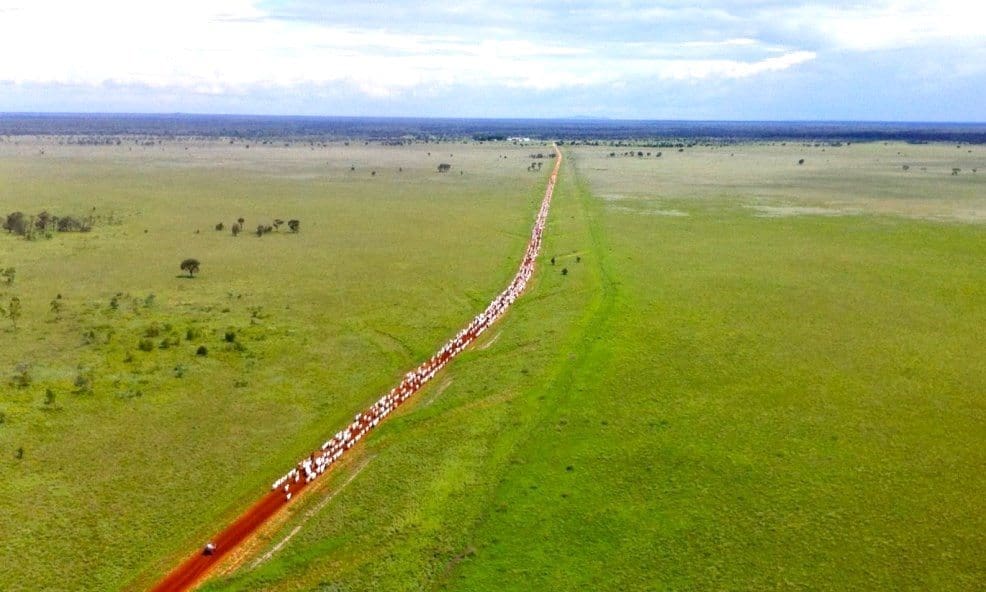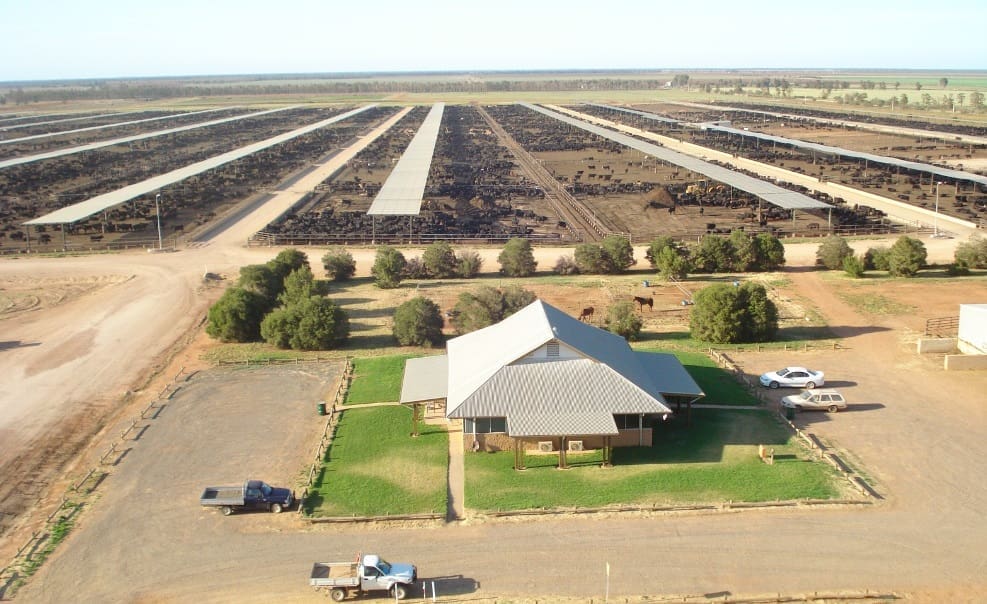
Camm Agriculture’s Natal Downs southwest of Charters Towers, is an example of a sale and leaseback deal in the cattle industry
DEMAND for Australian agricultural land appears to be increasing in the wake of COVID-19, with a major real estate marketing agency reporting a rise in sale and leaseback transactions.
Colliers International’s recent report “The rise of agricultural sale and leaseback transactions in Australia – September 2020” highlights that over the past two-and-a-half years (2018 to June 2020) around $2.15 billion worth of leased agricultural assets across Australia have changed hands.
The peak was in 2019, when close to $1 billion of assets were sold.

Nick Cranna
Co-author Nick Cranna is a national director agribusiness valuation at Colliers. Over the past decade, he has observed that the number of buyers interested in farmland has grown exponentially.
“Agricultural sale and leaseback transactions in Australia can start from as low as $4 million to many hundreds of millions of dollars,” he said. “In fact, according to the High Quest Partners-Global Aginvesting Rangings & Trends Report 2019, there are now 43 food and agribusiness funds investing in all forms of Australian agriculture compared to only two in 2009.”
Mr Cranna said the current market uncertainty (underpinned by COVID-19) had resulted in the deployment of a larger proportion of funds into leased agricultural assets.
“Any prolonged retraction in asset values from office, retail and hotels over the medium term will continue to shine a light on agribusiness sale and leasebacks,” he said.
Investor benefits
With some investors shying away from commercial properties that are considered to be highly volatile in the COVID-era, Australian agriculture is presenting as a business opportunity that is becoming more a mainstream investment.
Mr Cranna said agribusiness investments were a sound investment asset class in the short to medium term, compared to more traditional forms of real estate investment.
“These business opportunities are being influenced by the breaking of the drought, a long-standing period of low interest rates, a low exchange rate, and Australia’s clean green image and food security.”
“Uncorrelated returns are attractive in these uncertain times and ultimately creates optimal conditions for agribusinesses to take advantage of sale and leaseback opportunities,” Mr Cranna said.
COVID-19 effect
He believes COVID-19 will spark more passive agricultural investment.
“While there will always be capital looking to invest in real estate, agriculture has proven to be very resilient in the current uncertain environment. It’s largely an essential service-based industry, with food and fibre continuing to be vital to the emerging middle class of Australia’s near-neighbours.”
Colliers said agribusiness investment could have indirect positive environmental, social and governance impacts, with the sale and leaseback of agricultural assets an excellent way for institutional capital to gain exposure to the sector without taking operational risk.
While investors undertaking the practice are not immune to risk, agricultural investments had proven to be more resilient, with values holding firm.
Mr Cranna believes sale and leaseback will become more mainstream as existing investors expand and new investors look to incorporate agribusiness into their portfolios.
“The pool of farm management companies is growing, which is reassuring for capital sources with no agricultural experience, and those with a good track record are growing their pool of clients. I am confident it is a space that will underpin growth in the whole agricultural sector.”
Sale and leaseback
While sale and leaseback arrangements are evident in grazing operations, the practice is more prevalent in the more capital-intensive industries (such as post-farm gate assets) or horticultural assets (vineyards, almonds, citrus).
It is interesting to note that in the United States, the Department of Agriculture found that almost 40 percent of farm operations are leased, compared to an estimated 28pc in Australia.
Mr Cranna said the reason was that most farming operations in Australia are owned by families.
“The corporate farming model is much bigger in the US than Australia, with corporates inventing new ways of borrowing money or maximising their asset returns. In comparison, Australian farming families love to own land and expand, and as a result are not necessarily interested in becoming a tenant,” he said.
Beef examples
Two of most recent examples in the beef industry are JBS Australia’s deal struck two years ago to sell and lease-back its five cattle feedlots in New South Wales and Queensland for ten years, with listed investment trust Rural Funds Group in a deal worth $52.7 million. (That price was not representative of full asset value, however).
The previous year, RFG paid the Camm Agricultural Group $72.5 million for three adjoining cattle properties (Natal, Longton and Narellan) south west of Charters Towers in North Queensland a sale-and-leaseback deal.

JBS Prime City feedlot in NSW is part of a sale and leaseback deal, involving JBS’s five large commercial yards
Investor profile
Mr Cranna said the expectations and behaviours of investors had rapidly evolved over the past five years.
“When it comes to investing in agriculture, they are seeking more data to make more informed decisions, and the market is responding to that. It is also assisting investors who choose to divest their holdings.”
He said RIFA Salutory was a good example because it was able to demonstrate its various management teams and good accounts.
“The market has been craving data, and it is certainly improving with the likes of the NCREIF Australian Farmland Index which the market has taken on board by tracking land values and returns.”
Producer benefits
Mr Cranna said producers who engaged in sale and leaseback could deploy capital elsewhere in the business to extract greater returns and/or expand.
“We have seen some clients take out a competitor in their space or grow their exposure to a particular commodity to become more efficient. Approaching a financier might have achieved those same results in 10 or 15 years.”
Advice
With lease terms for agribusiness assets typically ranging from 10 to 20 years, Mr Cranna said it was critical that rent was set at market levels from the outset.
“Rental affordability is the key to these transactions, particularly when the present fundamentals are sound. Both parties don’t want to see rent become unsustainable, as the lessee can become unviable and the condition of the property may suffer causing the value to decrease.”
Mr Cranna said the sale and leaseback model had been largely successful, with many parties vertically integrated or have multiple assets behind them.
“Generally speaking, the majority of investors are seeking multi-decade offerings. Having said that, recently a fund wanted a shorter time horizon -offering lease terms of three to five years. The whole segment of the market can be serviced, it just depends on what the investor mandates.”
When it comes to sale and leaseback, Mr Cranna urged producers to do their research, understand how introducing rent would impact balance sheets and to determine what was driving the reasons for considering it.
“Is it to get bigger or to deploy funds elsewhere in the business? Go into a sale and leaseback with your eyes open. Make sure everyone is on the same page and that you are doing a transaction with the right counter-party – from the landlord’s point of view and from the tenant’s point of view,” he urged.
Further reading on this topic:
Liberating capital through sale and leaseback – Part 1
Liberating capital through sale and leaseback – Part 11

What are the general terms %of purchase price and other traps to look out for thanks Dan
Thanks for your inquiry, Dan. We’ve added links at the bottom of this week’s review to two previous property articles published last year that answer these questions. Editor